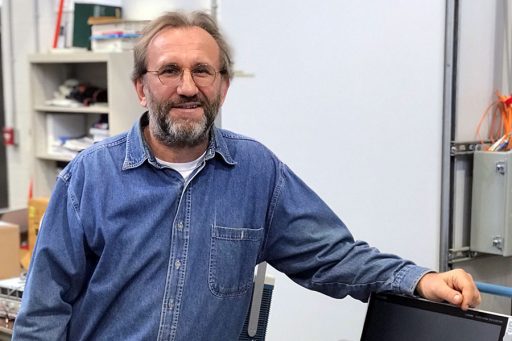
Direct current (DC) powers flashlights, smartphones and electric cars, but major power users depend on alternating current (AC), which cycles on and off 60 times per second. Among the reasons: AC is simple to turn off when there’s a problem – known as a fault – such as a tree falling on a power line.
More and more systems are transitioning to DC power, but researchers are still trying to find the perfect way to turn off the power in these DC systems. A new collaboration between Florida State University and Georgia Tech could solve that problem.
The ARPA-E BREAKERS program in the Department of Energy awarded FSU and Georgia Tech researchers $3.3 million to develop innovations in power electronics, piezoelectric actuators and new insulation materials to make highly efficient, high-power DC circuit breakers feasible.
The project is known as Efficient DC Interrupter with Surge Protection (EDISON).
“The transition from AC to DC, which is already happening, will open up a new paradigm for efficiently and controllably managing power in future electrical systems and military platforms,” said Michael “Mischa” Steurer, a research faculty member at Florida State University’s Center for Advanced Power Systems (CAPS). “This will be enabled by the amazing developments that have happened over the past two decades in power electronics.”
Direct current could be particularly useful as more renewable energy comes online. Photovoltaics in the west may still be generating power after the sun sets in the east. Wind turbines may be producing power in the mid-section of the country while clouds cover other parts of the country. Transmitting power from one location to another could therefore become more important.
The hybrid circuit breaker under development by the research team will use stacks of very large transistors to switch off the DC when necessary. Semiconductors are less efficient at conducting current than conventional mechanical switches, so under ordinary conditions, the current will flow through mechanical switches. But when the power must be turned off, current will be briefly routed through the power electronics until the mechanical breakers can be opened.
“We are proposing a hybrid DC circuit breaker in which the current will have two paths,” explained Lukas Graber, an assistant professor in the School of Electrical and Computer Engineering at Georgia Tech. “One path will be through the semiconductors, which can interrupt the current when needed. The second path will be through mechanical switches, which will provide a much less resistive path that will be more efficient for normal operations.”
In common consumer electronics applications, transistors are too small to see and handle just a few volts. The transistors that will be used in DC switching are much larger – a square centimeter – and dozens or hundreds of them would be combined in serial or parallel to provide enough capacity for switching thousands of volts. After the current has been moved to the solid-state transistor pathway, piezoelectric actuators will quickly separate the contacts in the mechanical switches before temperatures can rise too high in the transistors. Once separated, the flow through the transistors can be switched off.
“We need to be extremely fast,” Graber said. “We have to separate the contacts within 250 microseconds and to completely break the current within 500 microseconds – just half a millisecond. For that reason, we cannot use spring-loaded or hydraulic actuators common to AC breakers. Devices that rely on the piezoelectric effect can do that for us.”
The Georgia Tech and FSU researchers have developed intellectual property for components of the proposed DC breakers and will work together to combine the technologies.
The FSU researchers are headquartered at CAPS, a multidisciplinary research center organized to advance the fields of power systems technology. CAPS researchers focus on electric power systems modeling and simulation, power electronics, control systems, high-temperature superconductor characterization and electrical insulation research.
“We will combine the strengths of significantly different technologies – solid state and mechanical – into a system that functions better overall than its individual components,” Steurer said. “The pieces of the system have to work together seamlessly within half a millisecond to achieve our goal.”
The researchers — including Associate Professor Maryam Saeedifard, VentureLab Principal Jonathan Goldman, and Postdoctoral Fellow Chanyeop Park at Georgia Tech and Professor Fang Peng, Research Faculty Karl Schoder, and Assistant Professor Yuan Li at FSU — expect to build a prototype that will be tested at FSU’s five-megawatt test facility within three years. The development and testing will be done in collaboration with a team of industrial partners who will ultimately transition the DC breakers to commercial use.




